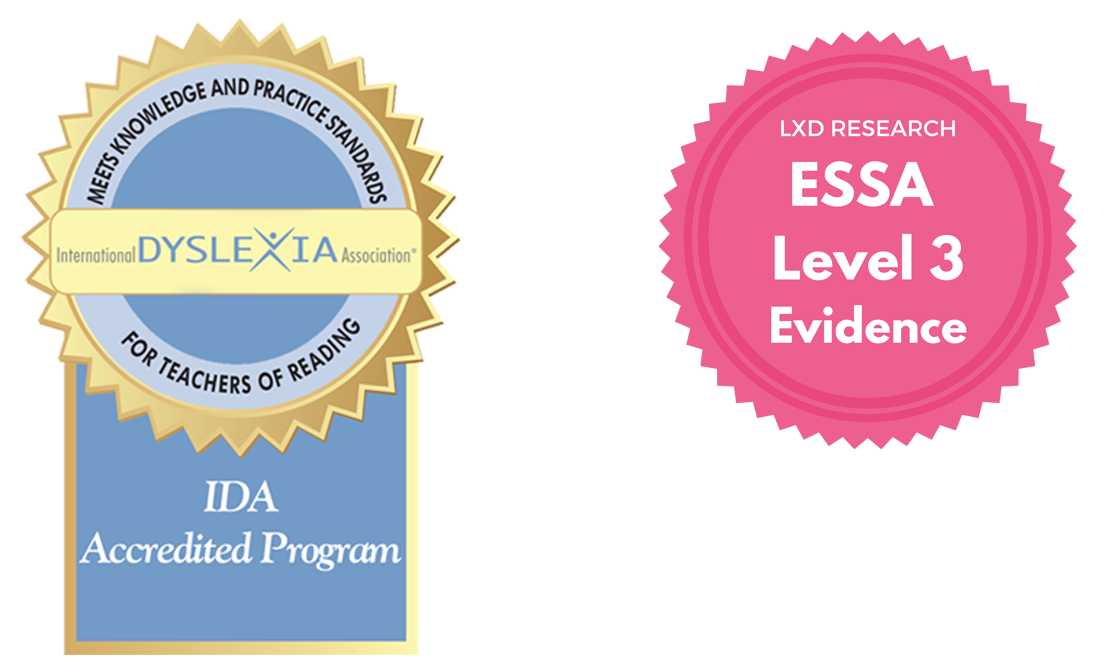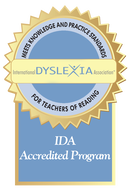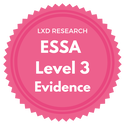Why SLANT®?The SLANT System for Structured Language Training® is a research-based, systematic and explicit multisensory structured literacy training program combining professional development for teachers and systematic curriculum materials for students. ▼ |
|
• Extensive professional development: Teachers participate in over 45 hours of course work during their initial year of implementation and are assigned a Coach to visit their class at least 4 times during their initial year of implementation. • Decodable Text: All materials are 100% decodable based on the SLANT® Teaching Sequence. • Lengthy reading passages: Reading passages vary from single pages to several pages allowing readers to transition more easily to chapter books or other extended reading selections. • Informational reading passages: Many passages in Stages 2-7 are informational in structure, allowing students the opportunity to work with factual text structure. • Reading comprehension questions: Beginning in Stage 3, each reading passage is followed by comprehension questions. These questions are based on Bloom’s Taxonomy and allow teachers to target specific higher order thinking skills for each student. • Inclusion of vocabulary development: During professional development, teachers learn how to select vocabulary items from the word lists and reading passages in order to encourage vocabulary expansion. Beginning as early as Stage 1, students will be taught morphemic elements necessary for word meaning, spelling and comprehension. • Multiple opportunities for practice: Each unit contains several word lists, pages of sentences, and reading passages with increasing complexity. • “Less is more” in terms of materials: Teachers are not overwhelmed by extensive materials and find implementation of the program simple. After learning how to plan a lesson, all materials support instruction leaving nothing for teachers to create or gather for their lessons. • Flexibility in lesson planning: Teachers learn the SLANT lesson plan format and, through hands-on coaching, learn how to adapt the lesson to the unique needs of their students. • Flexibility in determining student progress: The decision to move forward in the teaching sequence is guided by both student performance and teacher judgment. Teachers are encouraged to base their decisions on the specific needs of the students thus avoiding students being held at one level over an extended time because they are unable to demonstrate a predetermined level of mastery. • Flexibility in instruction for students with word-finding (retrieval) difficulties: During professional development teachers learn how to adapt lessons to the unique needs of students with word-finding difficulties so these students can demonstrate their knowledge of concepts through more receptive, rather than oral expressive, means. • Picture Cards: Stage 1 materials include an extensive pack of picture cards that illustrate most of the vocabulary words in the Stage. This allows for easier understanding of reading passages at this level and provides teachers with many additional activities to extend learning opportunities in vocabulary and comprehension. • Expanded teaching sequence: Certain concepts, such as blends and vowel combinations, are broken down into smaller “chunks” to allow more guidance and practice for more needy students. For example, consonant blend instruction is grouped by blend “families”. Each family is taught as a separate lesson. If needed, these lessons can be compacted. • Ongoing support: Teachers appreciate the individual and personal approach to training and certification. For that reason, they feel supported in the process and beyond. Support and guidance is always available after the initial year of implementation. • Continuing professional development: After the initial year, teachers are encouraged to participate in ongoing coursework, ranging from study groups to summer classes led by nationally known practitioners. Teachers can remain connected to a community of certified SLANT® teachers through continuing education, collaboration sessions, and other professional development opportunities. |






